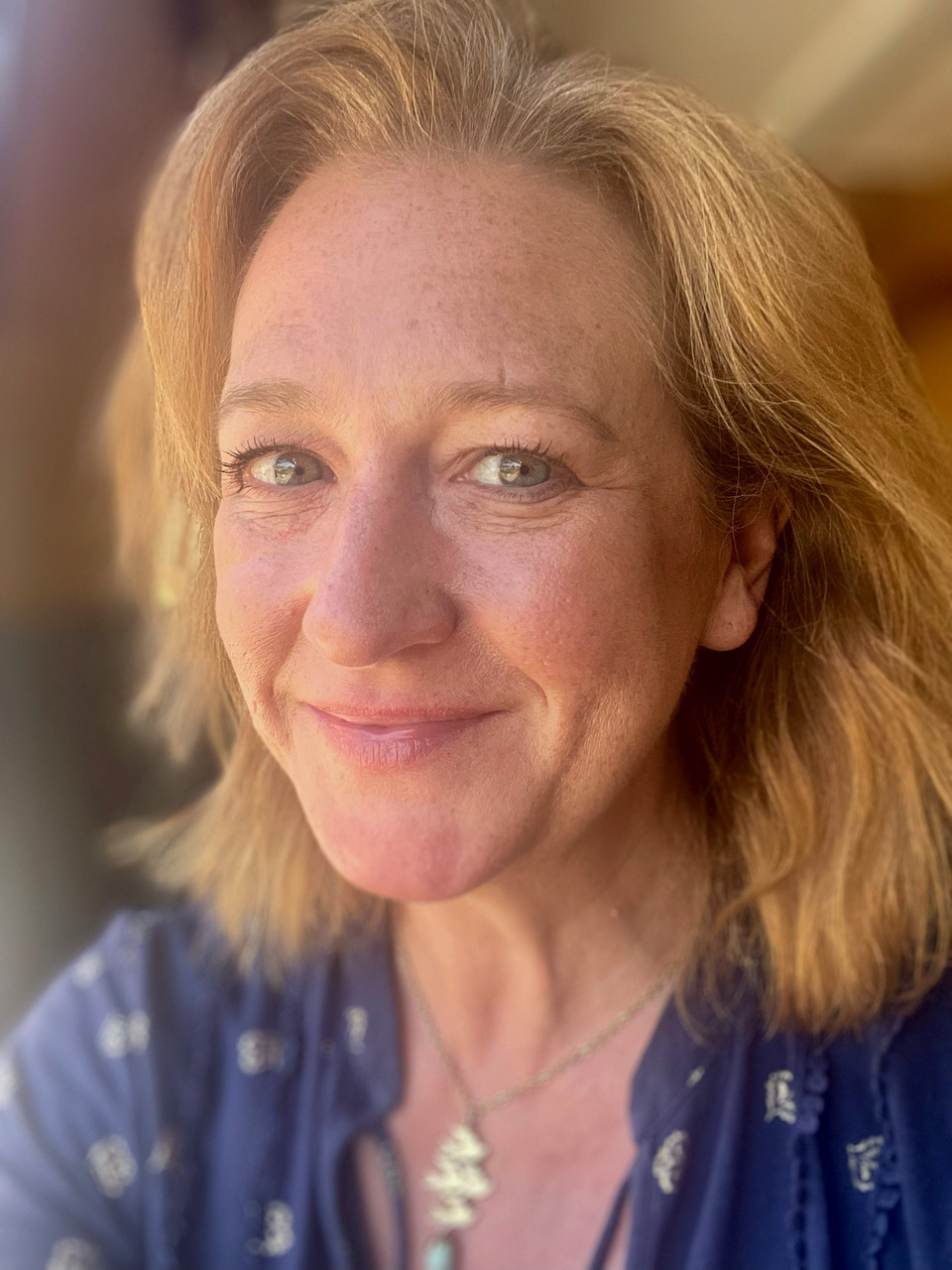‘It only remains for our descendants to curse our impotence and laissez-faire’: Only four photographs of a storied London townhouse survive inside the Country Life archive — and it was brutally demolished not once, but twice
No. 32, Soho Square was demolished not once, but twice, despite warnings of doing so in Country Life.
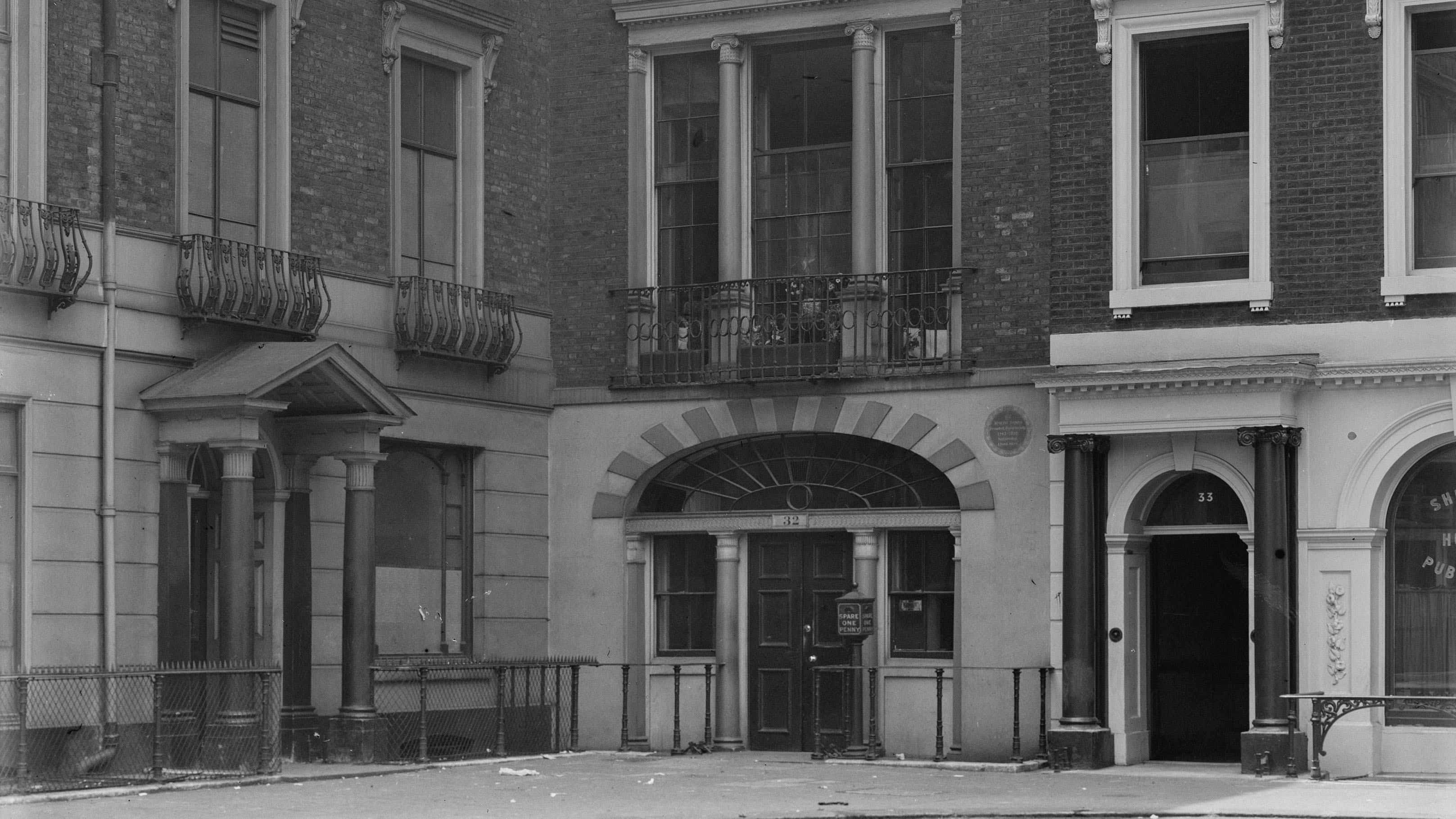

In 1913, Arthur T. Bolton — the soon to be curator of Sir John Soane’s Museum, and contributing architectural writer for Country Life — penned an article for the magazine, charmingly entitled ‘A Small Town House of XVIIIth Century’. ‘It would be lamentable if, some day, the house-breakers arrived and it quietly disappeared… ’ mused Bolton, somewhat prophetically about the elegant courtyard property.
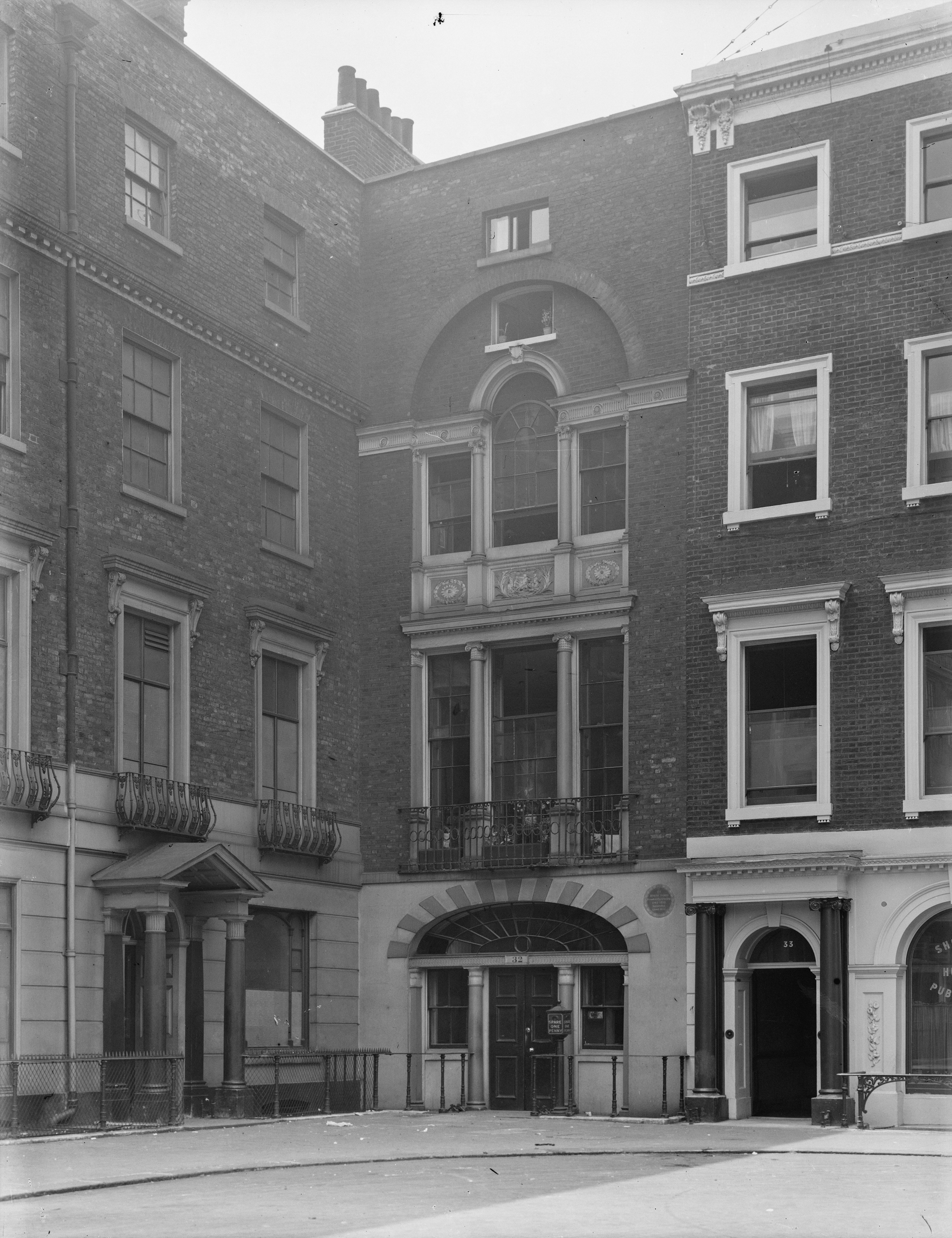
The building in question was 32, Soho Square, in central London — an area of the capital, Bolton noted, that was still considered as late as 1839 to offer: ‘ …a very pleasing and somewhat rural appearance.’
Only four photographs survive in the Country Life Image Archive of the structure, but they show a striking, two-storey townhouse complete with a tell-tale blue roundel to the side of the front door nodding to its historic connection, and a somewhat incongruous ‘spare one penny; collection box on the doorstep from the building’s then-current inception as the London Heart Hospital.
Credited to Robert Adam, the property had been the home, and presumed purpose-built offices and museum of Sir Joseph Banks — the groundbreaking naturalist who had sailed with Captain Cook on his first great voyage in the Endeavour, and had been allowed to name Australia’s Botany Bay after his epochal discoveries of flora and fauna in the region. Such was Sir Joseph’s — who went on to become the President of the Royal Society and adviser to King George III on his botanical gardens at Kew — renown, that one Dr Johnson sought out his company via his own close friend Sir Joshua Reynolds. The resulting friendship was clearly reciprocal, as Sir Joseph acted as a pallbearer at the great man of letters’ funeral, years after their first meeting.
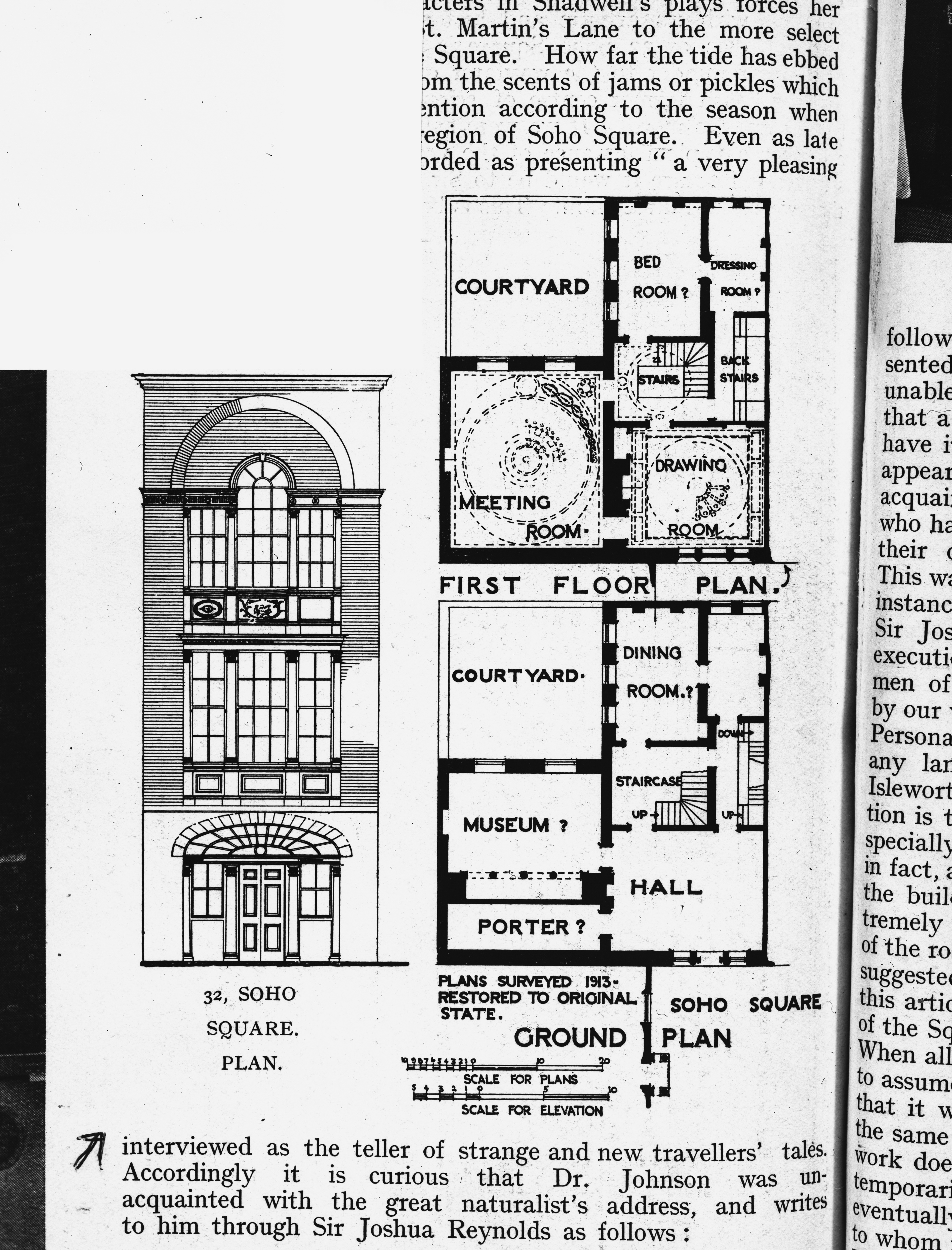
Bolton commissioned a ‘special survey plan’ of the building for his article, showing how he believed the rooms in 32, Soho Square had been laid out in Banks’ time, with the vast majority handed over to a first floor Meeting Room which featured a classic Adam stucco-work ceiling and fireplace, and, a floor below, an equally large museum room with columned recesses to display the adventurer’s vast collections. Here, the congenial and convivial Banks received all manner European scientists who had previously been forced to meet in rooms above the Turk’s Head. Only one small bedroom was recorded in the late Georgian property, indicating that Sir Joseph dedicated his time to working from, rather than resting at home very seriously.
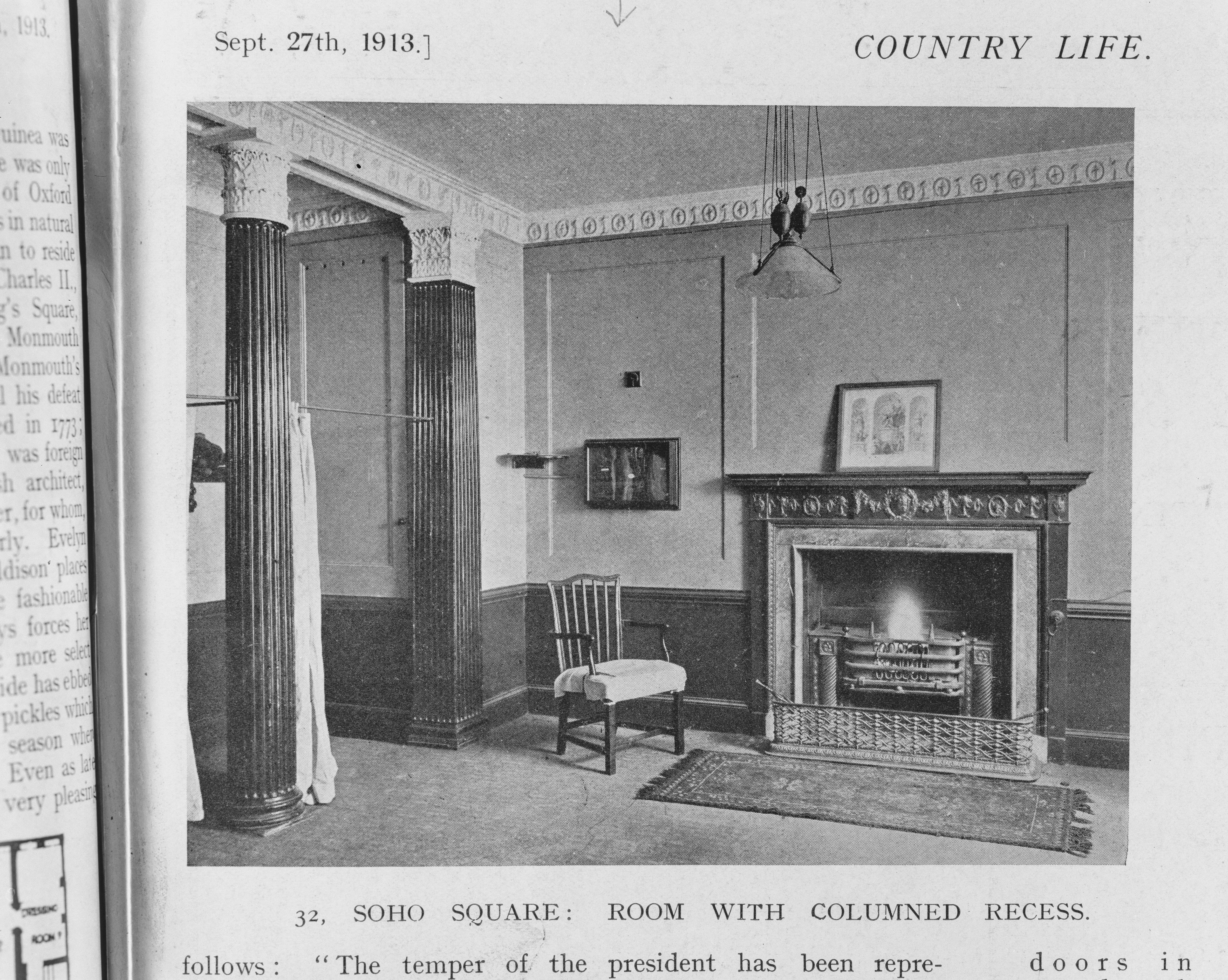
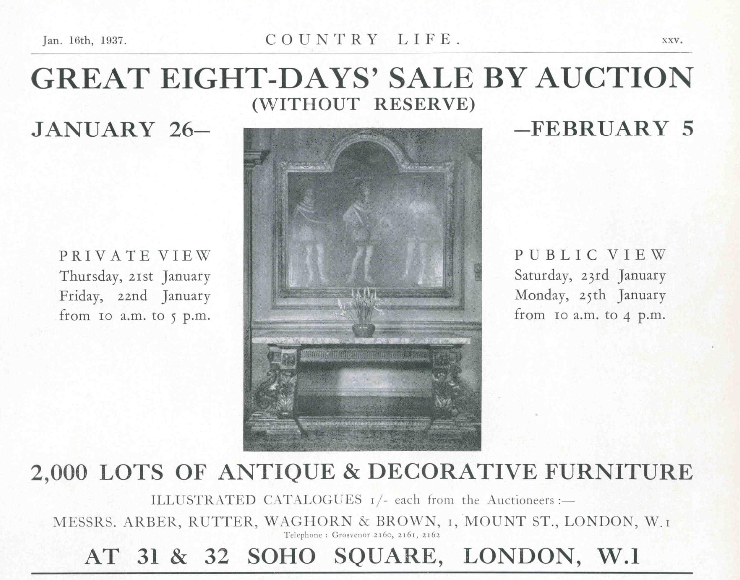
The above advert ran inside the January 16, 1937, of Country Life, prior to the demolition of the Adam townhouse.
On Banks’ death in 1820, the property went through various incarnations as a dental school, antique furniture showroom, and the aforementioned heart hospital, but by 1913 Banks’ story was considered old hat, and so, tragically was his home. It took another 20 plus years, however, until the death knell finally rang on the building. In Country Life on January 16, 1937, Philip Steegman reported on the sale of contents, including the ornate plasterwork and fireplaces. The unreserved sale of the contents of No. 32, and its neighbour took place between January 26 and February 5, 1937. The demolition men soon followed, replacing the 18th century beauty with an angular 1930’s structure built specifically for 20th Century Fox (which was also recently demolished and replaced with another building behind the 1930’s facade. London is nothing if not consistent in its reinvention).
I’ll leave the last sentences to Steegman, writing about the demolition plan in 1937: ‘ ...there is no doubt that No. 32, Soho Square is, in some major particulars, the most important Adam house still left in London… It only remains for our descendants, when they go through the back numbers of Country Life, to curse our impotence and laissez-faire.’
Exquisite houses, the beauty of Nature, and how to get the most from your life, straight to your inbox.
The Country Life Image Archive contains more than 150,000 images documenting British culture and heritage, from 1897 to the present day. An additional 50,000 assets from the historic archive are scheduled to be added this year — with completion expected in Summer 2025. To search and purchase images directly from the Image Archive, please register here
Melanie is a freelance picture editor and writer, and the former Archive Manager at Country Life magazine. She has worked for national and international publications and publishers all her life, covering news, politics, sport, features and everything in between, making her a force to be reckoned with at pub quizzes. She lives and works in rural Ryedale, North Yorkshire, where she enjoys nothing better than tootling around God’s Own County on her bicycle, and possibly, maybe, visiting one or two of the area’s numerous fine cafes and hostelries en route.
-
 Making space in a Georgian terraced Chelsea cottage
Making space in a Georgian terraced Chelsea cottageGuy Goodfellow removed an internal wall to transform the sitting room of this Georgian terrace
-
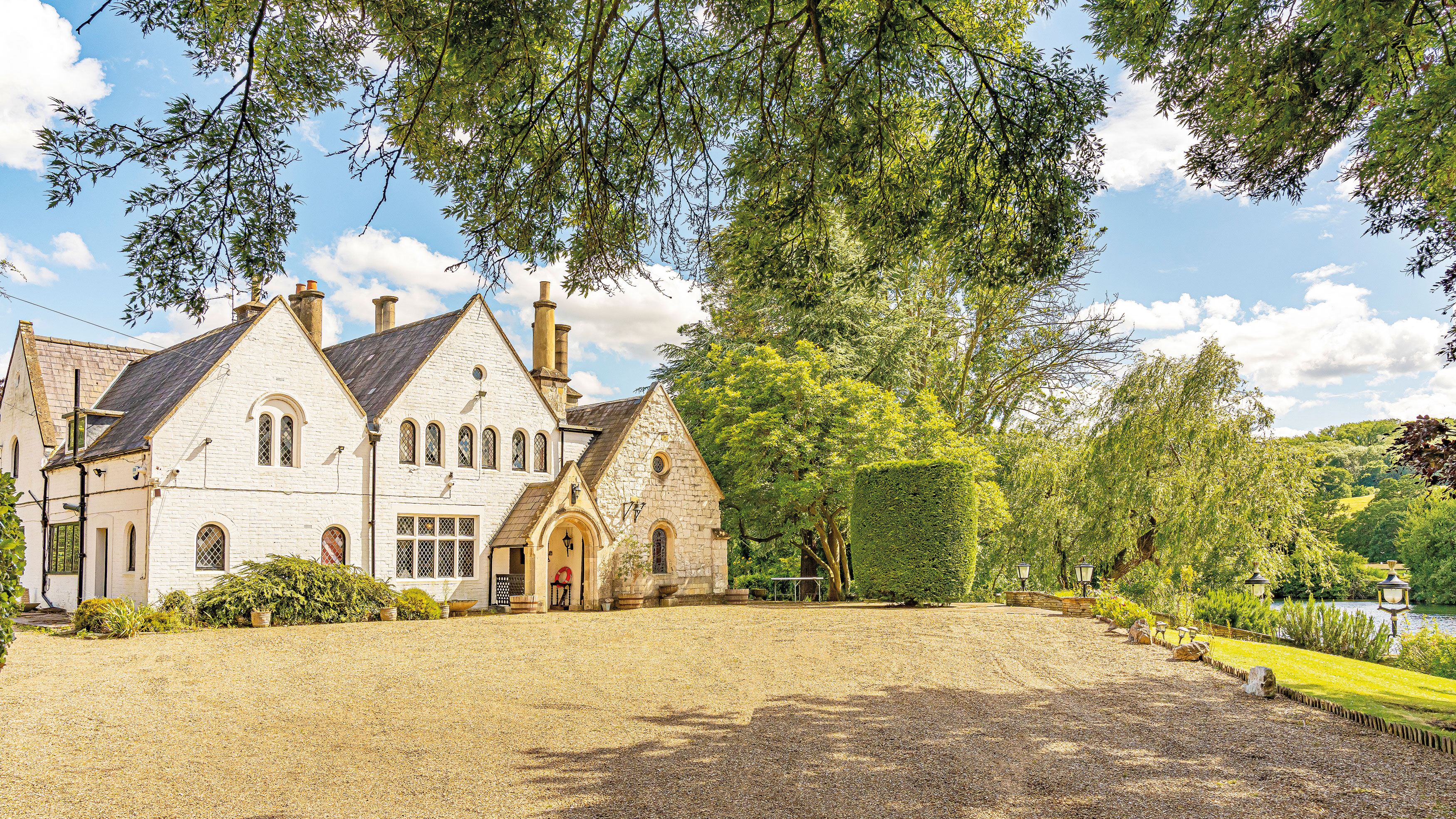 Magna Carta Island for sale on the Thames, complete with the stone tablet on which Magna Carta itself is said to have been sealed
Magna Carta Island for sale on the Thames, complete with the stone tablet on which Magna Carta itself is said to have been sealedThis beautiful house on a private island on the River Thames isn't just a charming home — it's one with an extraordinary tale to tell.
-
 Why you absolutely need an electric Bentley Blower furnished with Russian reindeer leather
Why you absolutely need an electric Bentley Blower furnished with Russian reindeer leatherA collaboration between Hedley Studios and The King's shoemaker George Cleverley has produced something rather remarkable. Jeremy Taylor goes for a drive.
-
 Kilt status: A history of the iconic Scottish skirt, from wartime wrap to punk protest
Kilt status: A history of the iconic Scottish skirt, from wartime wrap to punk protestEverything you need to know about the kilt — apart from what to wear underneath one.
-
 How a floating salad farm fuelled two record-breaking rowers across the Pacific Ocean
How a floating salad farm fuelled two record-breaking rowers across the Pacific OceanMiriam Payne and Jess Rowe grew cabbages and radishes on their small boat while rowing more than 8000 miles from Peru to Australia.
-
 The Glovebox: Return of the Bentley Supersports, the ultimate rural Range Rover and the car collection fit for The King
The Glovebox: Return of the Bentley Supersports, the ultimate rural Range Rover and the car collection fit for The KingA century after it was the first Bentley to top 100mph, the Supersports is back and looking better than ever.
-
 Better than Ozempic? 50 years of the Brompton bicycle
Better than Ozempic? 50 years of the Brompton bicycleOwen Wilson, James May and most of the middle-aged men and condescending hipsters you know love them. As the iconic folding bike turns 50 Lotte Brundle hops on one with the company's CEO.
-
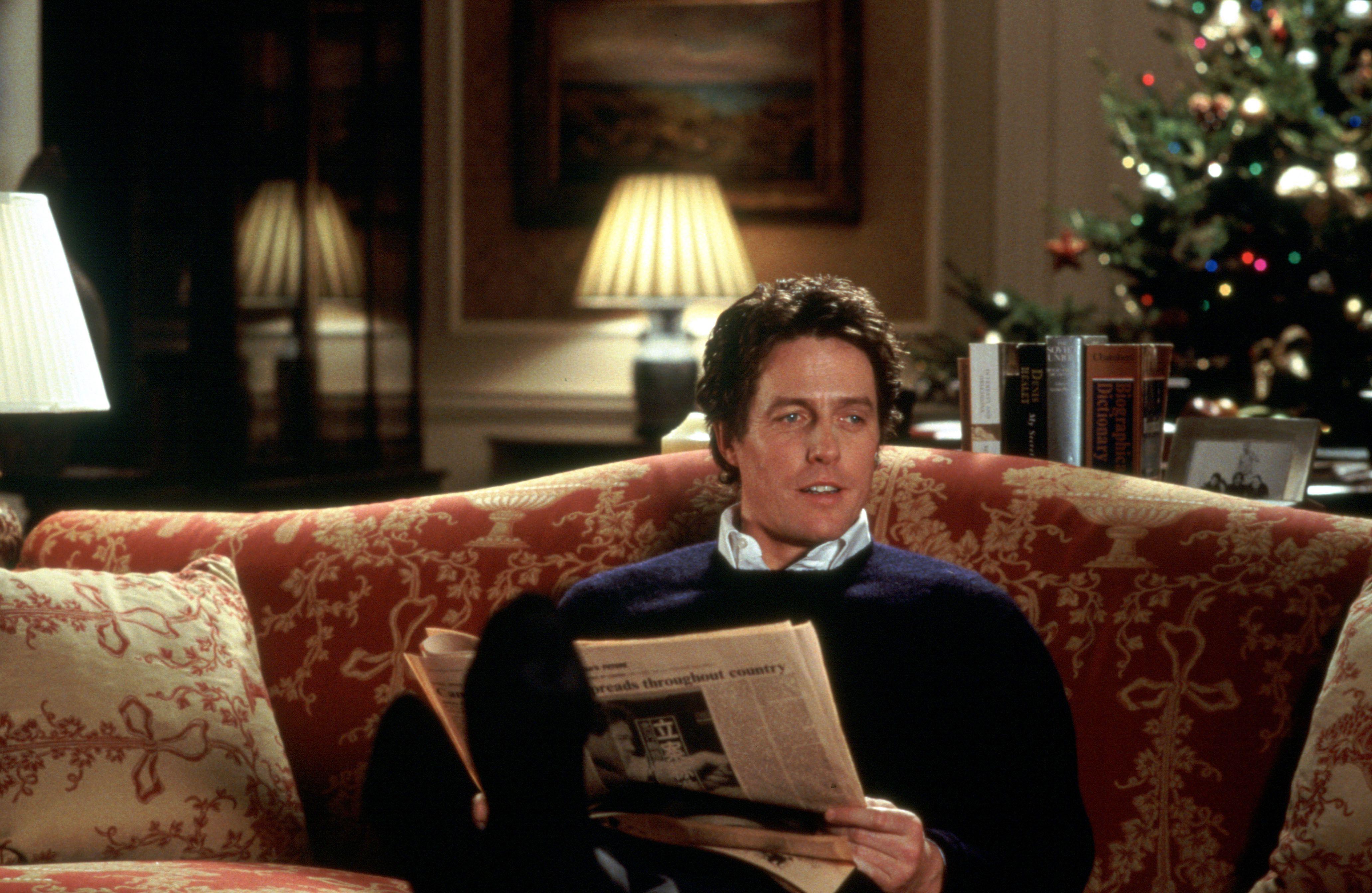 Ho Ho House of Commons: A simple guide to the best Westminster gifts, featuring a duck that is also Big Ben, a cat called Attlee and an infamous jumper
Ho Ho House of Commons: A simple guide to the best Westminster gifts, featuring a duck that is also Big Ben, a cat called Attlee and an infamous jumperThe House of Common’s gift shop has got everything from a plushie of Attlee, the Speaker’s miserable looking cat, to a rubber duck that pays tribute to the mighty work of the Suffragettes.
-
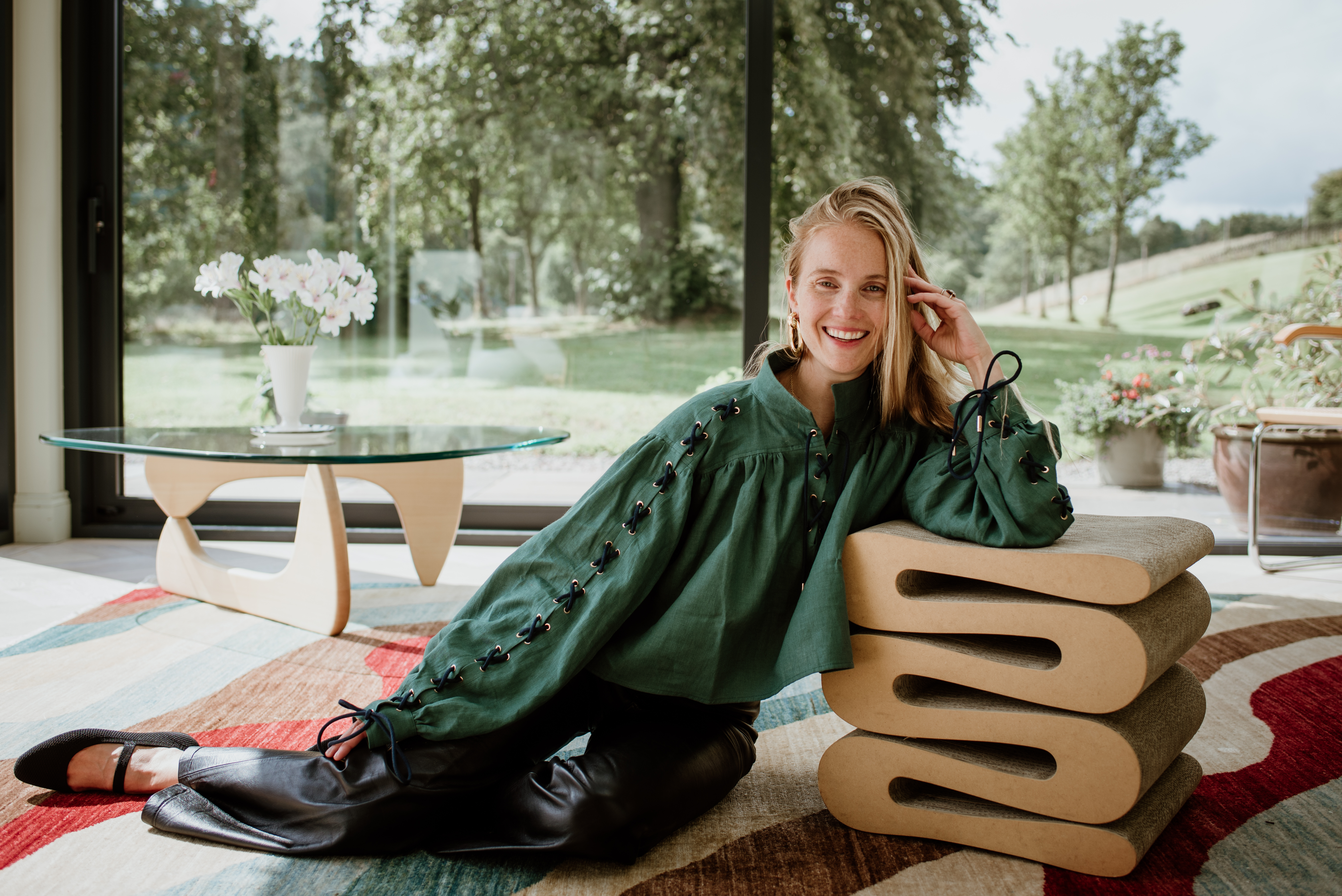 ‘I 100% always knew that I was going to do something creative’: Petra Palumbo on her design house, love of Scotland and consuming passions
‘I 100% always knew that I was going to do something creative’: Petra Palumbo on her design house, love of Scotland and consuming passionsThe London ‘It Girl’ turned Scotland-based designer makes tiles with men’s torsos and Henry hoovers on them, has a pug called Raisin and is married to the 16th Lord Lovat Simon Fraser. She chats to Lotte Brundle.
-
 McLaren's three Ellas and the future of motorsport
McLaren's three Ellas and the future of motorsportMcLaren is rewiring the pipeline for women, on track and across the motorsport landscape
